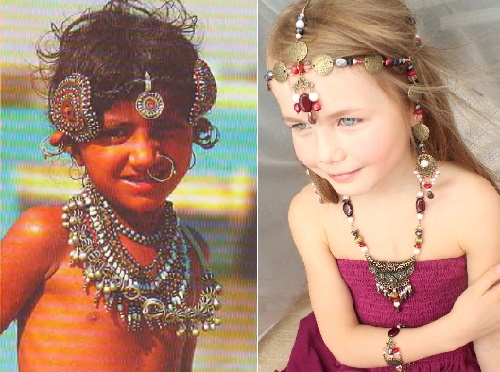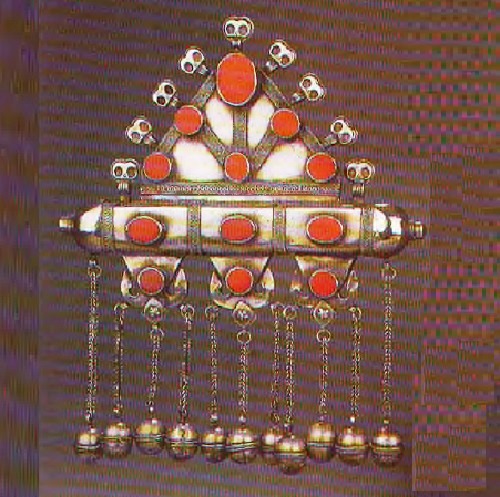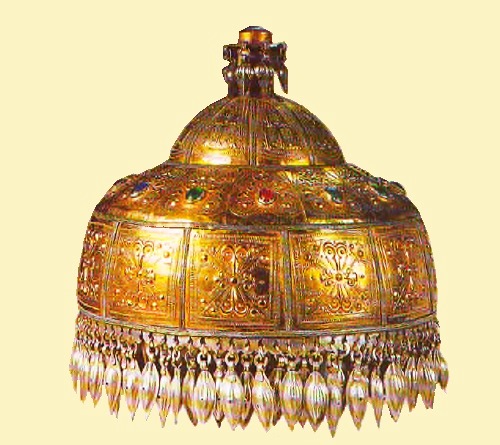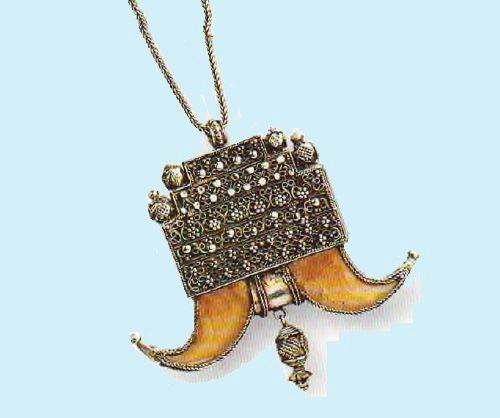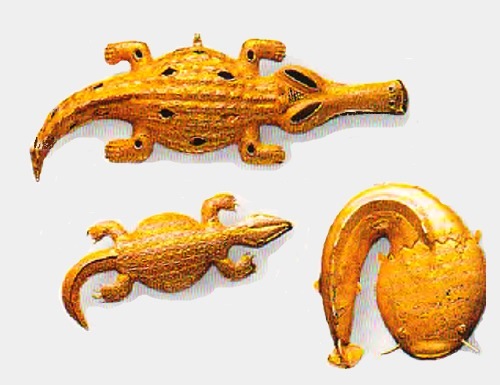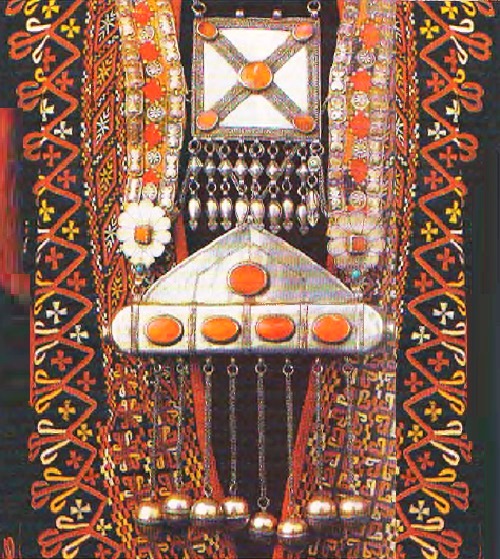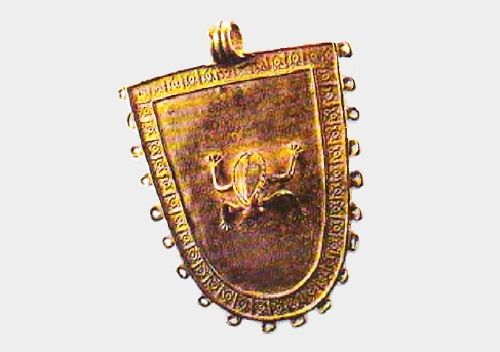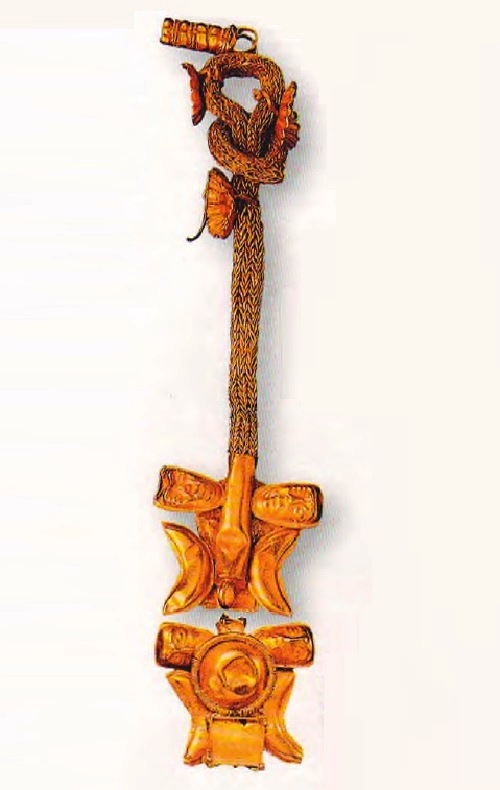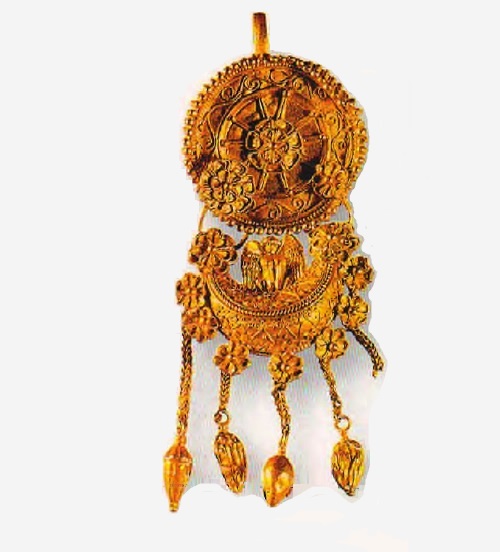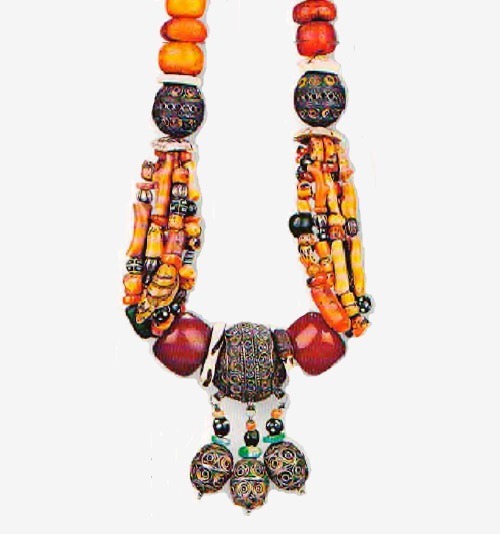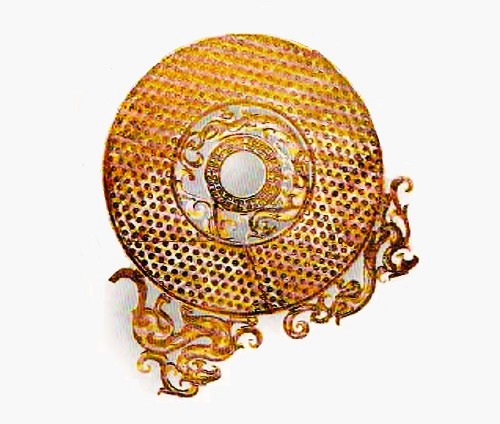Protective child amulets
Protective child amulets
Among special children apotropaic amulets almost all over the world are rattles or other noisy and ringing items driving out evil spirits. The Indians of the Americas used in this role amulets – rattles – dried gourd with dry seeds in them. In Russia – dried poppy heads and woven from birch bark toys, emitting a rustling sound. The descendants of the ancient tintinnabutum – equipped with bell suspension, depicting men with a huge phallus, suspended on a cradle throughout Europe.
In Central Asia, the bells were worn on a chain around kids’ neck; silver, bronze, copper suspension with bells became so familiar to all of us modern plastic rattle in the form of beads for strollers. Many apotropes were put to the newborn at the bottom of the crib or bassinet. In Europe over the cradle hung bells, horns and Fig signs (Italy, Spain), shells, cowries, and under the pillow put mole foot or claw of big animal, the rooster spurs, horns of black kid, scarab, brush (counting its “hair” distracted the witches from the child), a sharp object – a knife, scissors (the evil forces stumbled on them); amulet made of wax Easter candles.
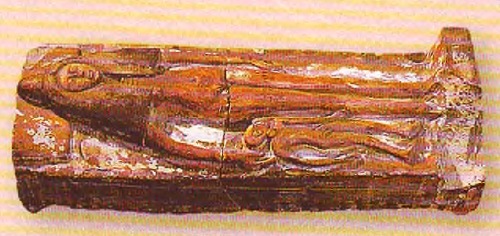
The birth of a child – a very dangerous time for both mother and child during childbirth so they were protect by amulets of this kind. Egypt
In the role of amulets were red threads with a plurality of nodes on the wrists of babies (they were not taken off until adulthood); Dried bud of primrose in amulets – from witchcraft; holy pictures, pouches, preferably red, with three nails – from the witches; three pinches of salt, three grains of wheat – to wealth; Three black peas – for good vision; tuft of badger hair – from the evil eye; The first page of the Gospel, or a piece of paper with the first words of the Mass, three stones with the junction of roads, as well as fragments of dried umbilical cord or placenta, if a child is born “in a shirt”.
In the European region, the children certainly had crosses hung on the neck on a chain or silk (leather) red cord, low coral, stones with a hole (“Chicken God”), horns, hearts, anchors, carved from coral, carved figs. Especially vigilant was guarded a child born weak or who was born in a family where the children have already died; this kid in Yugoslavia had
pierced right ear, with the earring – ancient coin on a silk cord.
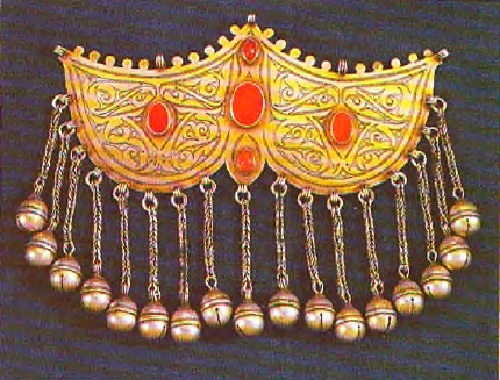
Amulet for boys, worn on the back to protect from the eyes of the devil. Turkmenistan. The beginning of XX century. Silver, coral
An interesting example of an entire culture of children apotrope can serve decorations from Turkmenistan, the region where until recently the infant mortality rate was horrendously high. The youngest child had a cap with cowrie shell sewed to it, cloth or wooden triangles, beads of blue paste, white, black or blue buttons, coins, owl feathers, on his neck hung a piece of wood, cloth amulet on a motley band with prayer inside a silver triangle “doga”. Older children wore on legs silver or copper bracelets (often with bells), hand bracelets of colored or black with white beads. Those charms are mounted on the outer clothing, complementing them with applications, embroidery, pearl buttons, silver plaques (for girls) and buckles (for boys), braids of camel’s hair, tufts of hair from the first haircut, beams of feathers, silver amulets, various silver Garnished with carnelian rustling shelpe pendants.
After five years, mainly for boys apotropeic became okyay (“Bow-Arrow”) – the flat openwork silver with bells or arrow-shaped pendants decoration in the form of a stylized bow and arrow. It was placed on the back of his robe, the boy grew up brave and strong, was lucky as a warrior and hunter. Sometimes okyay was worn by girls, in order in the family was born a boy.
Girls were guarded by numerous ear and nasal-charms: silk thread with beads, beaded jewelry, sticks of wood, feathers of owl. On skullcap sewed silver triangles doga, cylindrical tumar amulets, amulets with salt and coal, massive silver jewellery “bird’s claw.” The traditional talisman for girls was kupba – silver cap hemisphere with the vertical tube in the center, worn over skullcaps, seven or eight year-old girls were ‘equipped’ with amulets for brides including silver bells.
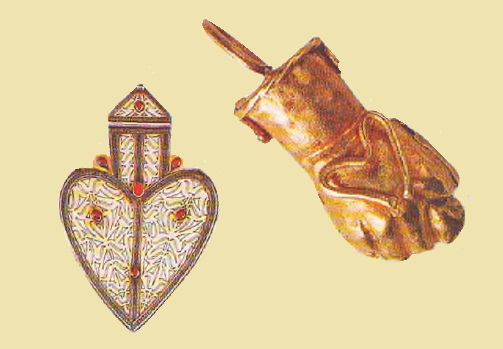
Suspension-fig. I c. Panticapaeum. Gold (right). Amulet (Asik) in the form of the heart, protecting from the devil, worn on the back. Turkmenistan. The beginning of XX century. (left)
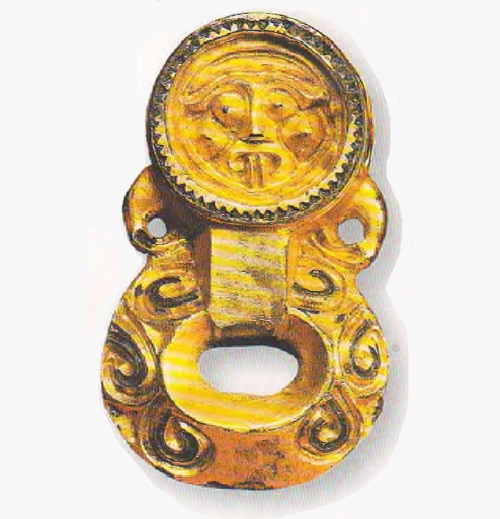
Amulet depicting the god Odin. Belt buckle. The spirit-guardian imprinted on each side in the form of hooked beak. Sweden

Earrings played a protective role in Egypt. These earrings were men’s and women’s jewelry. During the reign of Tutankhamun men wore earrings just before reaching adulthood.
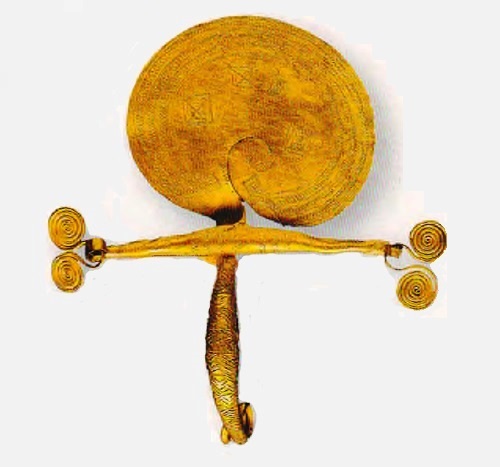
One of the most common objects in ancient times – fibula.It served as a clasp of clothes and was carrying protective function. The Etruscans. Gold

Pectorals, worn in Tibet. Kirtimukha (Face of Glory) (left). Necklace. Oman. The beginning of XX century. It serves as protection for the skin. (right)
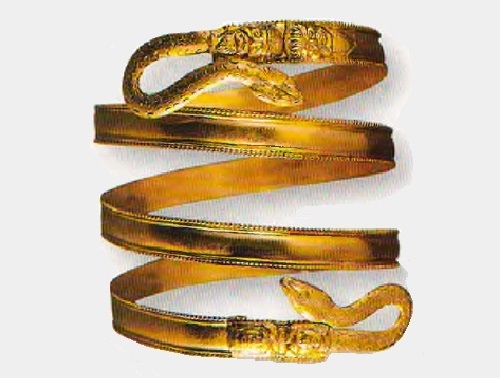
Bracelet as a spiral. The origin is not precisely determined, the middle of the IV B.C. Gold. Satire decorated with images of animals and Selena

‘Eye of Horus’. Protective amulet, including several typical Egyptian characters – ‘Eye of Horus’ flanked by the goddess Nekhbet (left) and the goddess Vaduet (right). From the tomb of Tutankhamun. XVIII dynasty
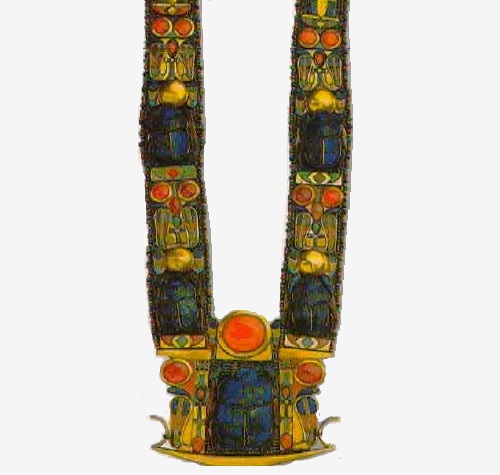
Necklace from the tomb of Tutankhamun depicting the sacred scarab beetle, the hieroglyphic sign of the sun god Ra. XVIII dynasty
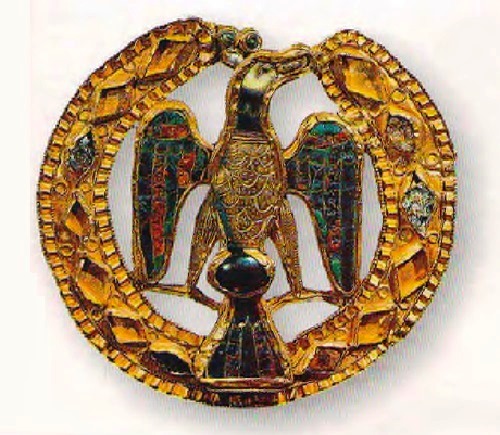
Precious stones are always endowed with magical powers that can protect their wearer. The era of Otto. X century
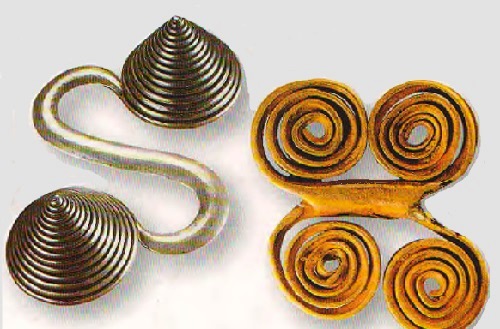
S-shaped ornament with two pyramidal tops. Worn by women on the back. China. Silver (left). Element of decorations in the form of connected spirals. Troy (right)

Sunny scarab. Lapis lazuli. Detail of pectoral from Tutankhamun’s tomb. Scarab, a symbol of rebirth, holding aloft a sign of the god Ra – the sun disk
The ritual jade bi disk. Henan Province. China. Disc Bi with a circular hole was
a symbol of heaven. Initially a very simple shape, it gradually acquired a rich decorative border. Sometimes it depicted dragons (Dragon was the spirit of the rain), sometimes “grain pattern” or geometric pattern of lozenges. At the burial bi was placed under the back, and the symbol of the Earth tsung – on the stomach of the deceased.
